For more information, watch The Onyx Report weekly on YouTube! Contributors are listed at the bottom! This list is still in development and is constantly evolving. It was last updated on: 2/9/24
It is believed that the ideas proposed here should identify the target audience when drafted into policy: Black males. It should be made unapologetically clear that these are not just for people of color, the poor, etc. In essence, this list is meant to be an archived compendium of policy ideas designed to improve Black males’ collective quality of life.
STREAMLINED LIST:
1) Family Court Reform (17 subpoints)
2) Education (3 subpoints)
3) Affirmative Action for Black Men
4) Targeted Homelessness Programs
5) Targeted Unemployment Programs
6) Criminal Law Reform & Law Enforcement (12 subpoints)
7) Intimate Partner Violence/Homicide Policy Reform (3 subpoints)
8) Health: Targeted Treatment and Recognition for Heart Disease, Cancer, Suicide, and H.I.V. Campaigning (4 subpoints)
9) Targeted Small Business Support
10) Social Security & Life Insurance Family Support
11) Paternity Leave
12) Reverse Voter Disenfranchisement
13) Black Male Specific Reparations for the Trans-Atlantic Slave Trade through 21st Century Hyperincarceration (3 subpoints)
14) The United Nations: We Charge the U.S. With the Genocide of the Black Male
15) Title VII Reform
16) Data Disaggregation
17) Black Men’s Rights To Self-Defense
18) False Accusation Offender Registry
DETAILED LIST
1) Family Court Reform
The Family Court’s treatment of Black men has unfairly and drastically diminished Black men and boys’ quality of life by privileging women as the primary caregivers.
a) Child Custody
-
- This includes automatic 50/50 child custody as long as fathers can prove what mothers are required to as far as being able to provide a stable and safe living environment. Once determined, pre-existing income-based alimony/child support judgments levied against Black men should be re-assessed. Also, child support payments for either parent should be eliminated (scroll to 27 min.) with 50/50 custody and should only be considered if there isn’t a 50/50 custody arrangement.
- The presumption of law that 50/50 custody is in the best interest of the child or children. Child support is only available where 50/50 custody has not been awarded.8
b) Mandatory Paternity Testing at Birth
Before signing the birth certificate, newborns should be given a D.N.A. test to ensure the father’s parentage, thus avoiding men being unjustly responsible for supporting children under false pretenses. This should be REQUIRED before any issuance of child support judgments.
Addendum A:
Once determined that the father has been misled regarding the child’s parentage (no matter how long it has been), he should be excused from both the birth certificate and child support (at his determination). The exploited party should be subject to legally-sanctioned reimbursement from the mother, the biological father, and relevant city/state/federal government offices. Interest should be 7% (compounded annually) in addition to the principle owed to the injured party. Furthermore, the “Presumption of fatherhood” should be formally stricken as established law.
Addendum B:
Men should have access to DNA prenatal paternity testing, testing at birth, testing at divorce hearings, and testing at the Family Court.14
c) Reinstituting AT-FAULT Divorce Standards2
In alignment with gynocentric family court policies, no-fault divorce negatively impacted Black men by authorizing a massive shift in marital culture that dramatically underdeveloped them economically.
d) Termination of Parental Obligation2
As we understand the law, it is a woman’s right to choose whether or not she will carry a baby to term, put the child up for adoption, or abort it. Therefore, within the first 6 months of being informed about the pregnancy, men should have the right to financially disassociate themselves from it. (Formerly “Financial Abortion.” Term renamed by Hoodservative.)
Also, we should automate financial abortion for cases of “female stealthing” (when a woman sabotages male contraception) and criminal charges should also be added. See the article here.
e) Child Support Value System2, 8
We advocate instituting a system where goods, services, and time spent with a child should be calculated and valued at a dollar amount (any remaining deficit to be paid in cash). Also, child support should be capped at $2500 per child regardless of income (except in the case of suggested practice addressed in the letter “i” below). (See Attorney Dennis Spurling).
f) Right-to-Lifestyle2
Post-divorce, men should be entitled to the life they have been accustomed to in marriage. Thus, any judgment or consent determination must ensure that the husband can enjoy the same privileges and lifestyle enjoyed BEFORE or DURING the marriage, whichever costs more to maintain.2
g) Require Formal Child Support Management Reports
Ensure those child support payments are explicitly earmarked for approved child-related expenses only. Costs used on non-child-related expenses must be accounted for by the custodial parent. (Xavier B.)
h) Prohibit Jailing for Failure to Pay Child Support5
Such incarceration frequently punishes men for being poor more than anything else. This, in turn, increases Black male unemployment and further hurts families’ economic stability.
https://www.ncsl.org/research/human-services/child-support-and-incarceration.aspx
i) Income Floor for Child Support1
-
- There should be a set minimum income for anyone on child support.
- If someone is chronically under this floor in terms of income, state governments should provide opportunities for them to intern at an apprenticeship in a trade.
- Only if they quit and refuse to work in an apprenticeship should they be incarcerated.
j) Child Support and Alimony Assistance Program2
Where it can be proven that a man’s Child Support and Alimony Judgement requirements are causing a practical impact on his standard of living, the state government and municipality shall pay the cost in whole or in part (but no less than 66%) of the total cost of the child support and alimony payments.
k) Tax Filing Options
At income tax time, it is believed that some women “sell” their children’s social security numbers to friends, family members, etc.; either when the mother is not working or has maxed out her 2-child benefit to receive income credits. Thus,
-
- Whenever a 3rd party submits tax returns claiming care of another person’s child, any child support orders to the mother of the stated child should be rendered void. (Or, denial of the 3rd party’s claims on the child as a dependent. This should fall under saving tax dollars.) The natural question should be, why is the mother being paid for a child under the care of 3rd party?
- Welfare benefits and incentives for women fuel the single-mother phenomenon. So, to eliminate welfare contingencies (or to incentivize contingencies for fathers), we propose a cap on subsidizing single mothers and/or subsidizing single fathers.
- Any child support paid should be considered earned income (due to taxing it). Women can claim child support as an extra earned income that improves their credit and ability to finance vehicles and other products and services. Men who pay child support are not allowed to claim payments made when filing taxes, even when the amount can be a third to even 50% of their earned income.
- We advocate a policy that exempts child support payments from the applicant’s gross income when they apply for public housing and or housing assistance. The payment is counted as income for the custodial parent and counted in the gross income for the non-custodial parent, their gross income dictates their acceptance into the program and their rent amount. Some men may not qualify due to their gross income being over the limit, but they may not actually bring that amount home due to child support payments. His rent may be exceptionally higher since H.U.D. states that 30% of gross income should go to rent. This leads to a plethora of issues for many brothers in the community such as Black male homelessness, joblessness, and the propagation of children born out of wedlock.7
- Amend Title IV(D) of the Social Security administration code granting states matching funds up to 66% of what they recover from persons who have committed paternity fraud and collected child support and arrears, and other state and federal benefits.8
l) Revising the Child Support Formula
Child support is treated as another form of alimony, two things should be addressed by the Family Court (nationally):
1. Fifty-fifty custody should eliminate child support (assuming expenses are jointly paid by both parents).
2. The formula that determines child support is predicated on an outdated model of women not working. Now that labor participation is fairly equalized in terms of gender, the notion used by some states of children requiring 25-50% of parent’s income should also be paid in equal measure by both parents—but reducing:
a. men’s majority child support default status where men are the secondary parent needs to be re-assessed (see The Tender Years Doctrine), and
b. the 25-50% child support for men required to pay it (who do not have 50/50 custody) should have their payments pro-rated to a percentage-based judgment against her (usually ignored) labor.
m) Eliminate the Suspension of Driver’s Licenses and Passports11
No state should suspend someone’s driver’s license and passport for failure to pay child support. All states have statutes to suspend someone’s license for failure to pay child support. Juxtapose this to seventeen states that allow unauthorized immigrants to apply for a driver’s license.
Suspending someone’s driver’s license, especially Black men’s prevents them from earning a living. This, in turn, makes life more difficult when many undocumented immigrants are able to get driver’s licenses to pursue those very jobs Black men may have lost due to such punitive practices.
n) Child Support As A Trust Fund
The Family Court should determine that a small percentage of child support should be required to be put in a trust for the child to be made available to them at age 18 (See Ed Lover at 3 min).
o) Nullify Family Law’s Criminal Court Behavior 12
Criminal allegations are to be heard in criminal court. domestic violence and child abuse are crimes listed in the criminal code, and as such, those alleged of these crimes are to be afforded all the procedural and substantive due process protections associated with the 14th Amendment to the United States Constitution. Family “law” courts are not the proper venue for mediation of criminal matters. It is customary in the Family law setting for private attorneys to act as special prosecutors against private citizens and prosecute criminal allegations. This is a blatant perversion to the course of justice and creates obvious impediments to fairness. Family “law” court IS NOT a court of law. It is a court of equity, and there are some stark differences between the two. Essentially, a private attorney can prosecute you for criminal allegations of child abuse and/or domestic violence in Family Court, robbing you of your rights to a speedy jury trial and a criminal attorney.
p) End Permanent Alimony
Permanent alimony should be eliminated to prevent ex-spouses from being forced to work long past the age they wanted to retire because they were paying alimony. Men (those most on the giving end for permanent alimony) should be able to seek modifications to alimony agreements when they want to retire. Also, judges should reduce or terminate alimony, support, or maintenance payments after considering a number of factors such as: 1) “the age and health” of the person who makes payments, 2) employment status, 3) familial status, and 4) the customary retirement age of that person’s occupation.
2) Education
Educational institutions play a huge role in influencing Black boys and men from preschool through graduate school. Yet the discrimination and underdevelopment they experience at the hands of teachers, practices, the administrative bureaucracy, and educational policies do a great disservice to the supposed mission to educate Black males.
a) Single Sex Pedagogy & Institutions
As there is documentation to suggest that Black boys perform better in all-male environments—(particularly under male teachers), it is proposed that boys be educated in environments that are all male, preferably Black, and rooted in a pedagogy that seeks to improve their performance by prioritizing their history, culture, and gender.
b) Preparatory Reading/STEM Educational Support
Ten percent of city, state, and federally targeted resources for incarceration be diverted to educational afterschool programs for ADOS/FBA boys. Even funds earmarked for special education can be used to draft male college-level teaching assistants to create an all-male educational support structure. Also provide tax breaks for private companies who may philanthropically donate materials, tech, etc. Lastly, cable/internet companies are incentivized by federal/tax policy to provide free high-speed internet.
c) Single Sex Education
Should include curricula that accommodate the learning style of young boys. Rote learning styles may be insufficient, and tactile styles of learning may need to be implemented for them. In later years of schooling, financial education for black boys should be a requirement.
3) Affirmative Action for Black Men (1 and 6)
Double minority status for Black males where they have access to employment and higher payment income floors based on their race and gender. This is in response to generations of policies that disproportionately disadvantaged Black males based on their race and gender—most particularly Affirmative Action practices from the 1980s onward that prioritized white women and Black women over Black men.
We propose that Black men be offered permanent government employment at $25/hr. (with bi-annual cost of living increases and pay increases depending on the type of job) and the after high school graduation, the successful completion of the G.E.D. (General Educational Development Test) by the age of 18 (however, if one graduates early but is at least 16, they must be emancipated from their parents). Such employment should include on-the-job training and one should be vested after 30 years. Once vested, if one chooses to continue working, their employee retirement contribution will then go into a personal retirement fund. Based on Black men’s life expectancy (66 years (rounded down) by 2021–see graphic in #8), the job should come with a post-retirement pension after at least 35 years of employment–but one’s pension should not be received until the age of 58. If one is deceased before age 58, a portion (40%) of their pension should be designated to a declared beneficiary.10, 1
4) Targeted Homelessness Programs
Especially post-incarceration, Black men should be prioritized for housing as they are most often turned away despite having housing vouchers. Consequently, as Black America constituted half of America’s homeless (pre-COVID), and remains disproportionately homeless, the majority of the homeless (across races) tend to be male. This makes Black males the most susceptible group to homelessness.
5) Targeted Unemployment Programs
As Black males experienced unemployment at rates over 40-50% in over 34 major cities before COVID, many need advocacy and policy that prioritizes their employment on both racial and gendered grounds.
6) Criminal Law Reform & Law Enforcement
Law enforcement has historically barred Black males from justice, while at times being the source of injustice for Black men.
a) Criminal Sentencing Reform
Black men should be arrested and sentenced to no greater degree than any other members of any race who commit the same crimes. For example,
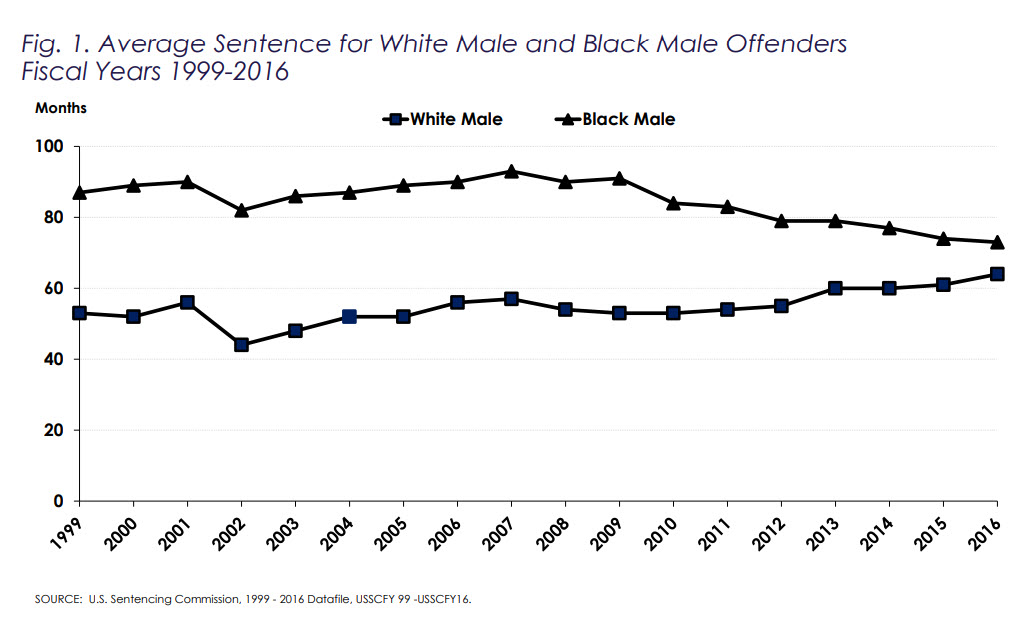
• Black male offenders continued to receive longer sentences than similarly situated White male offenders. Black male offenders received sentences on average 19.1 percent longer than similarly situated White male offenders during the Post-Report period (fiscal years 2012-2016), as they had for the prior four periods studied. The differences in sentence length remained relatively unchanged compared to the Post-Gall period.”
• Violence in an offender’s criminal history does not appear to account for any of the demographic differences in sentencing. Black male offenders received sentences on average 20.4 percent longer than similarly situated White
male offenders, accounting for violence in an offender’s past in fiscal year 2016, the only year for which such data is available. This figure is almost the same as the 20.7 percent difference without accounting for past violence. Thus, violence in an offender’s criminal history does not appear to contribute to the sentence imposed to any extent beyond its contribution to the offender’s criminal history score determined under the sentencing guidelines.
• Female offenders of all races received shorter sentences than White male offenders during the Post-Report period, as they had for the prior four periods. The differences in sentence length decreased slightly during the five-year period after the 2012 Booker Report for most offenders. The differences in sentence length fluctuated across all time periods studied for White females, Black females, Hispanic females, and Other Race female offenders.” Demographic Differences in Sentencing: An Update to the 2012 Booker Report (November 2017), pg.2.
b) Licensing Law Enforcement3
“Law enforcement professionals have a revocable license that can be permanently stripped to keep them out of the profession like lawyers, doctors, etc.” Police are protected under the ruling of police protection from incriminating information or keeping their job. Can save plenty of B.M.”- Anonymous
c) Proxy Violence
Recognition of proxy violence as a criminal offense, punishable by no less than 50% of the primary offense prison time.2
d) End “Qualified Immunity”
Often negotiated into union contracts, qualified immunity is a legal principle that grants government officials (especially law enforcement) performing discretionary functions immunity from civil suits unless the plaintiff shows that the official violated “clearly established statutory or constitutional rights of which a reasonable person would have known”.
e) Jury Nullification
“Jury nullification (U.S.) generally occurs when members of a criminal trial jury believe that a defendant is guilty, but choose to acquit the defendant anyway, because the jurors consider that the law itself is unjust, that the prosecutor has misapplied the law in the defendant’s case, or that the potential punishment for breaking the law is too harsh. Some juries have also refused to convict due to their own prejudices in favour of the defendant.” (Wikipedia)
Jury nullification disproportionately affects Black men. Thus, 30% of the jury should be Black men. More specifically, when an ADOS man has to go before a jury, 30% of that jury must be of his peers who would be ADOS men.”
f) False Accusations
There should be clear and more stringent punishments for filing false charges against Black men. Knowing that Black men are denigrated, stereotyped, and wrongfully convicted more than (and to greater degrees) others, such accusations can have a more far-reaching and detrimental impact on Black men’s lives. Black men are the most exonerated group due to false accusations according to the National Registry of Exonerations Newkirk Center for Science and Society, University of California Irvine. They state,
“African Americans are only 13% of the American population but a majority of innocent defendants are wrongfully convicted of crimes and later exonerated. They constitute 47% of the 1,900 exonerations listed in the National Registry of Exonerations (as of October 2016), and the great majority of more than 1,800 additional innocent defendants who were framed and convicted of crimes in 15 large-scale police scandals and later cleared in “group exonerations.”(p. 1)
Thus, whimsically dangerous charges with questionable/unreliable evidence (or no evidence at all) should be harshly dealt with to dissuade others from repeating this action against an already vulnerable population.
g) Minimum Age of Criminal Responsibility5
The minimum age of criminal responsibility in the U.S. is raised to at least 18 years of age. Most states do not have a lower age limit to where a person can be charged, prosecuted, sentenced, etc. for a statutory offense. The states that do specify an age floor, mostly range between 7 to 10 years of age. Such legal precedents contribute greatly to the criminalization of black boys.
- h) End Law Enforcement Collaboration3
Prohibits state and local officers from using federal databases to search for prior criminal records when in the process of questioning or apprehending a Black male. Officers more often than not decide their level of aggression based on one’s alleged prior history. There is a legislative precedent for such a law already as California has adopted it under the designation SB54 to protect illegal immigrants.
i) End Arbitrary Stop and Frisk8
Enactment of legislation abating the U.S. Supreme Court Case Terry v. Ohio 392 U.S. 1 (1968) which is a violation of the 4th and 14th amendment and the line of cases that flow from Terry, id.
“Terry v. Ohio, 392 U.S. 1 (1968), was a landmark U.S. Supreme Court decision in which the Court ruled that it is constitutional for American police to “stop and frisk” a person they reasonably suspect to be armed and involved in a crime. Specifically, the decision held that a police officer does not violate the Fourth Amendment to the U.S. Constitution‘s prohibition on unreasonable searches and seizures when questioning someone even though the officer lacks probable cause to arrest the person, so long as the police officer has a reasonable suspicion that the person has committed, is committing, or is about to commit a crime.[1] The Court also ruled that the police officer may perform a quick surface search of the person’s outer clothing for weapons if they have reasonable suspicion that the person stopped is “armed and presently dangerous.” This reasonable suspicion must be based on “specific and articulable facts,” and not merely upon an officer’s hunch.” (Wikipedia)
j) Self-Financed Police Liability Insurance8
Require police officers to take out individual policies of liability insurance to cover intentional and negligent actions while performing their duties as peace officers thereby holding individual officers personally accountable and limiting the exposure to money judgments the taxpayers must bear.
k) Retribution for Corrupt Systemic Sentencing Practices11
Black people, Black men especially, are 7.5 times more likely to be wrongfully convicted. In fact,
“The report, Race and Wrongful Convictions in the United States 2022, reviewed the cases of 3,200 innocent defendants exonerated in the United States since 1989. Black people, the researchers found, were 7 times more likely to be wrongfully convicted, were more likely to be the targets of police misconduct, and more likely to be imprisoned longer before being exonerated.
Black people were overrepresented in every category of the 1,167 wrongful murder convictions in the Registry’s database. African Americans constituted 56% (74/134) of all death sentenced exonerees; 55% (294/535) of wrongful murder convictions resulting in life imprisonment; and 54% (270/497) of wrongful murder convictions in which exonerees were sentenced to imprisonment for terms of years. “Innocent Black people are about seven-and-a-half times more likely to be convicted of murder than innocent white people,” the Registry reported. That figure, the report noted, “applies equally to those who are sentenced to death and those who are not.” (“Report: Black People 7.5 Times More Likely to Be Wrongfully Convicted of Murder than Whites, Risk Even Greater if Victim was White,” Death Penalty Information Center, September 30, 2022).
In essence:
-
- The federal government incentivized cities and states to write more strict laws and build more prisons. The states also proceeded to write more strict laws and build more prisons.
-
- For-profit private prisons contract with State governments to keep prisons at least 90% full.
-
- Judges sentence innocent people or levy excessive felony sentences against plaintiffs for minor
crimes and misdemeanors while collecting kickbacks.
- Judges sentence innocent people or levy excessive felony sentences against plaintiffs for minor
-
- Prosecutors brag about high prosecution rates, often orchestrated by offering plea deals with sentences that are excessive in punishment.
-
- Expert testimony is used to convict innocent people.
As a consequence of this dynamic, State and Federal governments should have to pay $1 million per year to any Black man who is exonerated of crimes he didn’t commit. For-profit private prisons should have to pay the exonerated 10% of the prisons’ revenue (not profits) for every year the exonerated was in their prison. Also, prison executives and investors should be liquidated of their ownership of the prison and sentenced to 25 years to life. Judges should be disbarred, sentenced to 25 years to life, and have to pay damages of $150,000 to the exonerated. Prosecutors should be disbarred and have to pay damages of $150,000 to the exonerated. Expert witnesses hired by the prosecutors should lose their professional license, be barred from court proceedings, be sentenced to 25 years to life, and have to pay damages of $150,000 to the exonerated.
l) Government Investment in Black Male-Centered Diversion Programs
Both state and federal governments should increase investments in diversion programs whereby Black male youth/men will be able to participate at a rate proportionate to their representation in the crime to which they have been found guilty of committing. For example, if 70% of assaults in Black communities were committed by Black males, then 70% of the participants in related diversion programs should be Black male youth/Black men.
7) Intimate Partner Violence/Homicide Policy Reform
Despite stereotypes that intimate partner violence/homicide aggression is the sole purview of Black males, it is nigh equal (bidirectional) in the Black community (meaning men assault women to the same degree women assault men, and the numbers of intraracial IPV homicide amongst the 40+ million Black population is negligible), with data suggesting that women (across race) initiate violence first while opting to use weapons more often than men.
a) Abolishing the Duluth Model.2
“…the Duluth Model is the most common batterer intervention program used in the United States. Critics argue that the method can be ineffective as it was developed without minority communities in mind and can fail to address root psychological or emotional causes of abuse, in addition to completely neglecting male victims and female perpetrators of abuse.” (Wikipedia)
More than ignoring male victims, the Duluth Model proposed that men were de facto guilty of being the primary abusers of women whenever a woman experienced some form of intimate partner violence. It ignored women’s greater capacity to initiate violence and/or be aggressors of IPV.
b) IPV Carceral Practices
Black men incarcerated for IPV require a massive re-evaluation of their status regarding their victimization at the hands of women. As rates of bidirectional abuse in the Black community suggest equal violence initiated by women to men (w=>m) and from men to women (m=>w) and the hypo-sentencing of women for the same crime as men by up to 63%, the under-representation of female aggressors suggests a massive bias in sentencing that disproportionately targets and criminalizes men. Especially when you take into account the rates of violence toward men, and Black men in particular according to a meta-study of IPV data going back to the 1980s. See below:
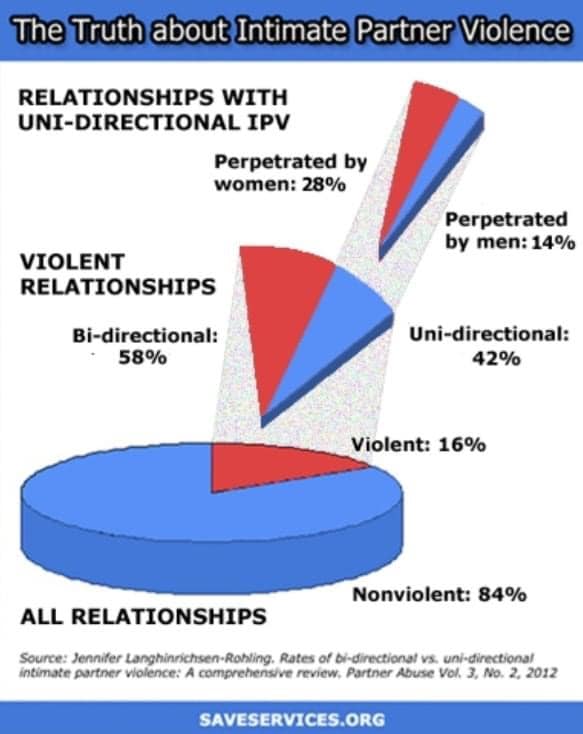
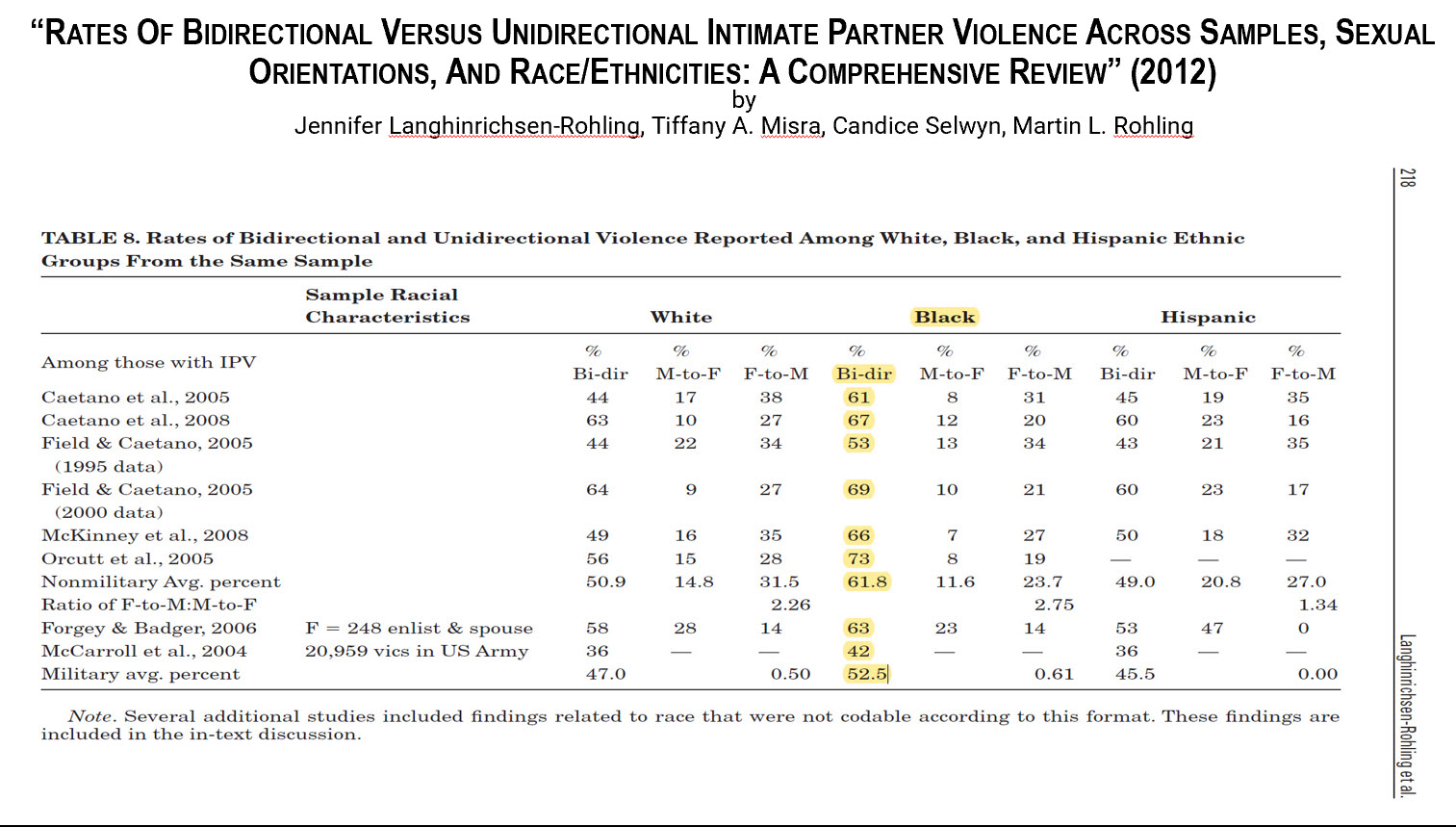
c) Sexual Assault/Rape Acknowledgment
Includes legally recognizing the withholding of sex as a form of sexual abuse in marriage. That said, such an acknowledgment might allow for less punitive access to annulments and divorce options. (Also requires that all rape allegations require traditional standards of adequate evidence before arrest and sentencing.2)
8) Health: Targeted Treatment and Recognition for Heart Disease, Cancer, Suicide, and H.I.V. Campaigning
a) Heart Disease: this is the number one killer of African Americans, but Black male deaths exceed Black women’s, suggesting that Black males require more targeted research and treatment.
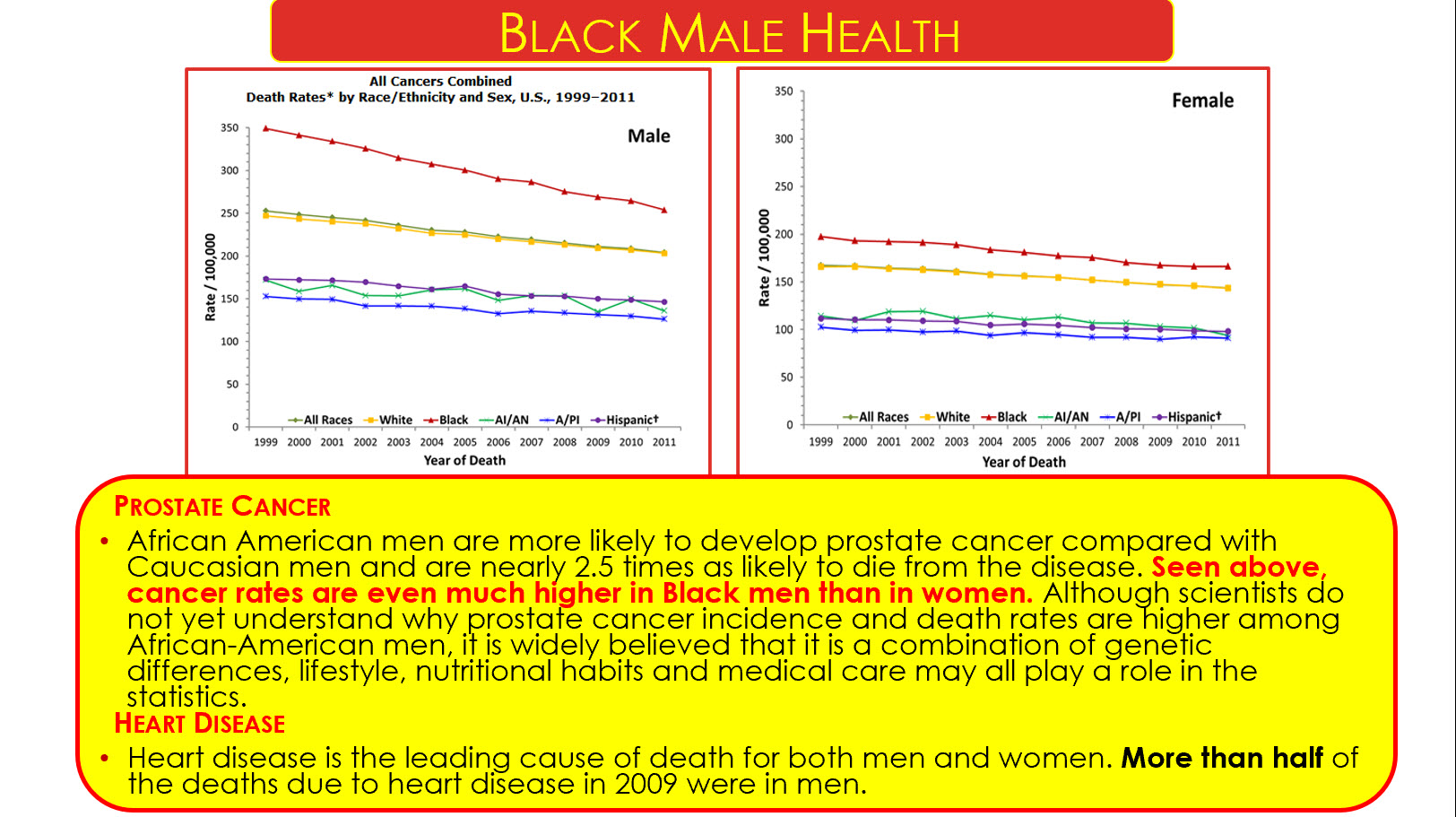
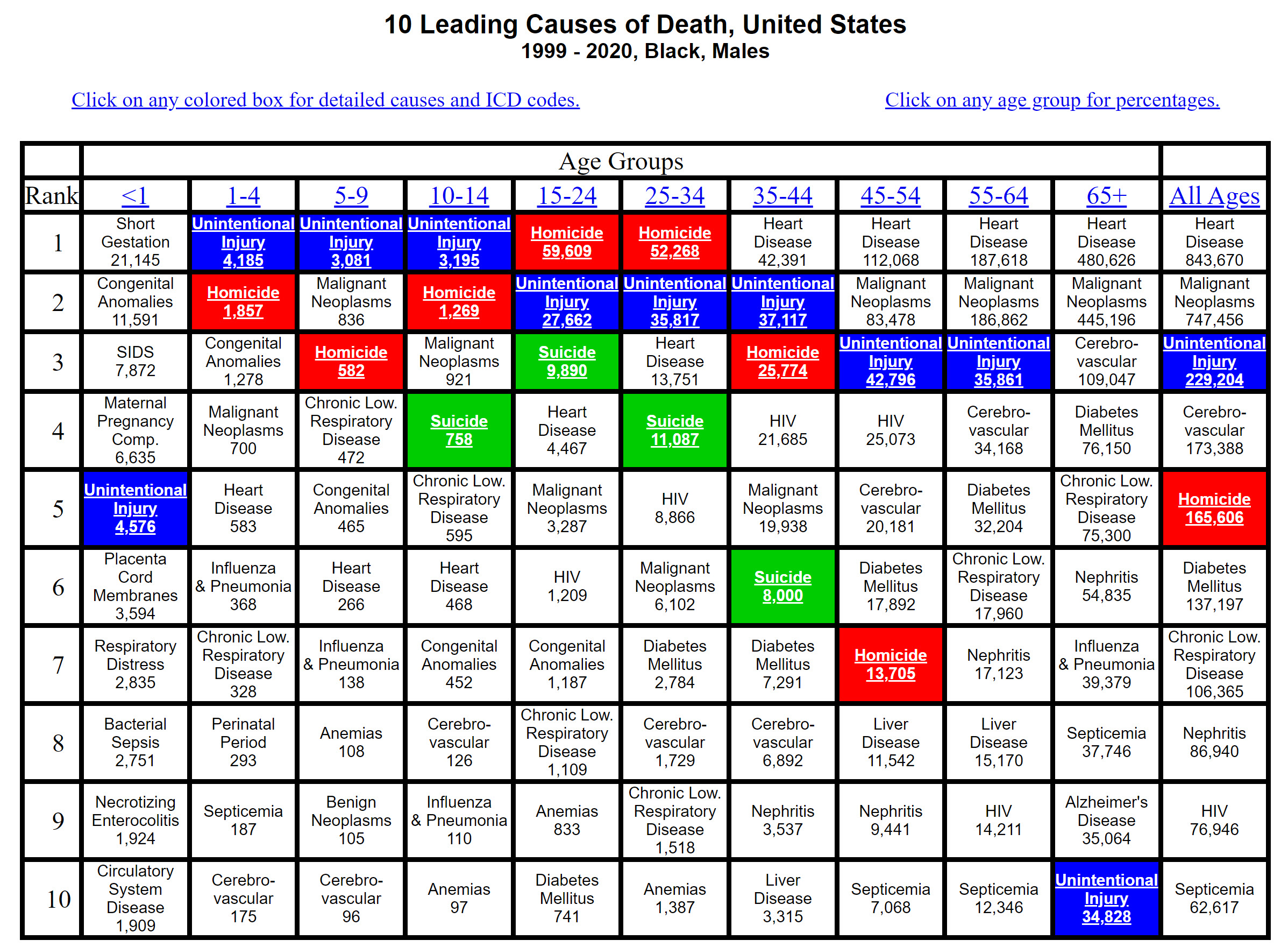
b) Cancer: Black men are diagnosed with cancer at slightly less rates than W.M. and W.W. but die from it more than W.M., W.W., and B.W. (Especially in Arkansas, Alabama, Connecticut, DC, Georgia, Hawaii, Illinois, Iowa, Kentucky, Louisiana, Mississippi, Missouri, Nebraska, South Carolina, Tennessee, and most especially in Wisconsin. The scale for measuring Black male cancer is 3x larger per 100K.)
“It was shocking for me to learn that African American men have the highest death rate and shortest survival of any racial and ethnic group in the U.S. for most cancers, and that prostate cancer is the number one diagnosed cancer among veterans.” — Chris Tucker*
One out of eight U.S. men will be diagnosed with prostate cancer. In 2022, nearly 269,000 men will be diagnosed with this form of cancer and over 34,000 will die as a result. Prostate cancer is the second most prevalent form of cancer in men. A man is more likely to develop prostate cancer than he is to develop colon, kidney, melanoma, and stomach cancers combined. While prostate cancer deaths have been reduced by more than 50% in the last three decades, the reality is still worse for African American men.*
African American men are:
-
- About 75% more likely to be diagnosed with prostate cancer than Caucasian men.
- 3 More than twice as likely to die from the disease.*
(*Prostate Cancer Additional Facts for African American Men and Their Families Guide, https://res.cloudinary.com/pcf/image/upload/v1648050456/Additional_Facts_for_African_Americans_a866uj.pdf).
c) Suicide:a Black male suicide has been dramatically increasing as of late and there needs to be targeted treatment regarding addressing this in both boys and men.
“The study, published Monday in the journal JAMA, found that teenagers attempting suicide increased 22% over the course of nearly three decades, but the trend varied depending on sex and race. Black males had the highest increase in suicide attempts compared to any other race in the group, for example, increasing nearly 80%.” – Kelsie Sandoval, “Suicide Attempts Are Rising Among Young Black Men. Experts Say They Face A ‘Perfect Storm’ Of Hardships,”https://www.insider.com/rise-young-black-men-attempting-suicide-perfect-storm-of-hardship-2021-6.
FACTS ABOUT BLACK BOYS AND SUICIDE
-
-
- Self-reported suicide attempts for black adolescents rose by 73% between 1991 to 2017.
- Black boys increasingly likely to attempt suicide, then Black girls who have more ideation then attempts.
- Black boys are engaging in more lethal means when attempting suicide than Black girls which has increased by 122% between 1997-2017.
- Black boys are twice as likely to die by suicide than White youth.
-
FACTS ABOUT BLACK MEN AND SUICIDE
-
-
- In 2014, 80% of suicide deaths in the Black community were men.
- Recent research has observed that Caribbean black men in the U.S. have the highest attempt rate for the African American community.
- Firearms were the predominant method of suicide among African Americans regardless of sex or age, suicides. Suffocation was the second most prevalent method.
- Black Men don’t often recognize depression or trauma as an issue therefore don’t associate S.I. as a problem.
-
– Patrice N. Douglas, PsyD, LMFT, “Black Boys, Black Men, And Suicide,” https://health.maryland.gov/bha/suicideprevention/Documents/Session%201A%20-%20BLACK%20BOYS,%20BLACK%20MEN,%20AND%20SUICIDE.pdf.
Also, see
African American Suicide Fact Sheet Based On 2014 Data (2016)
-
- In 2014, 2,421 African Americans died by suicide in the U.S. Of these, 1,946 were male (80.38%).The overall suicide rate per 100,000 was 5.46.
-
- In 2014, there were 475 African American female suicides in the U.S. The suicide rate of African American females was the lowest among men and women of all ethnicities.
-
- In 2015, researchers released data showing that there were more suicides among African American children ages 5 to 11 than among Caucasian children. This was the first national study to show observe higher suicide rates for African Americans than for Caucasians in any age group.
-
- While the majority of studies show that African American men are more likely to die by suicide while African American women are more likely to attempt suicide, recent research has observed that Caribbean black men in the U.S. have the highest attempt rate for the African American community.
-
- The suicide rate for African Americans ages 10-19 was 3.11 per 100,000.
-
- For African American youth (ages 10-19), the rate of male suicides (4.60 per 100,000) was 2.9 times higher than that of females (1.57 per 100,000).
-
- Males accounted for 81.5% of suicides completed by elderly African Americans (ages 65+). This percentage is mirrored by the suicides completed by elderly Caucasian men.
-
- Firearms were the predominant method of suicide among African Americans regardless of sex or age, accounting for 47.42% of all suicides [Between 1991 to 2017, suicide rates increased by 73% for Black youth, and injury by attempt increased 122% for adolescent Black males (Lindsey et al., 2019). – Abby Brady, Nathallie Chavez, and Morgan Pate, “Gender Differences in Black Youth Suicide,” The University of North Carolina at Charlotte, Research Brief, Summer 2021.] Suffocation was the second most prevalent method (29.9%).
(African American Suicide Fact Sheet Based On 2014 Data, 2016)
- Firearms were the predominant method of suicide among African Americans regardless of sex or age, accounting for 47.42% of all suicides [Between 1991 to 2017, suicide rates increased by 73% for Black youth, and injury by attempt increased 122% for adolescent Black males (Lindsey et al., 2019). – Abby Brady, Nathallie Chavez, and Morgan Pate, “Gender Differences in Black Youth Suicide,” The University of North Carolina at Charlotte, Research Brief, Summer 2021.] Suffocation was the second most prevalent method (29.9%).
d) H.I.V.: Black men, gay Black men to be specific, are the most vulnerable group when it comes to H.I.V. infection and mortality. Again, targeted support is needed to stem the high rates of mortality of Black males.
“Although they represent only 12% of the U.S. population, Black people account for a much larger share of H.I.V. diagnoses (43%), people estimated to be living with H.I.V. disease (42%), and deaths among people with H.I.V. (44%) than any other racial/ethnic group in the U.S.”(Black Americans and HIV/AIDS: The Basics.)
(See “Who Is at Risk for HIV Infection and Which Populations Are Most Affected?,” National Institute on Drug Abuse, July 2012, https://nida.nih.gov/publications/research-reports/hivaids/who-risk-hiv-infection-which-populations-are-most-affected.)

Source: CDC 2022. NCHHSTP Atlas Plus
https://gis.cdc.gov/grasp/nchhstpatlas/tables.html [Accessed 12/13/2022]
Source: CDC 2022. HIV Surveillance Report: Diagnoses of HIV Infection in the United States and Dependent Areas, 2020. Slide Set: HIV Infection, Stage 3 (AIDS) 2020. Slide 4
https://www.cdc.gov/hiv/pdf/library/slidesets/cdc-hiv-slideset-stage-3-infection-2020.pdf [PDF | 1.0MB]
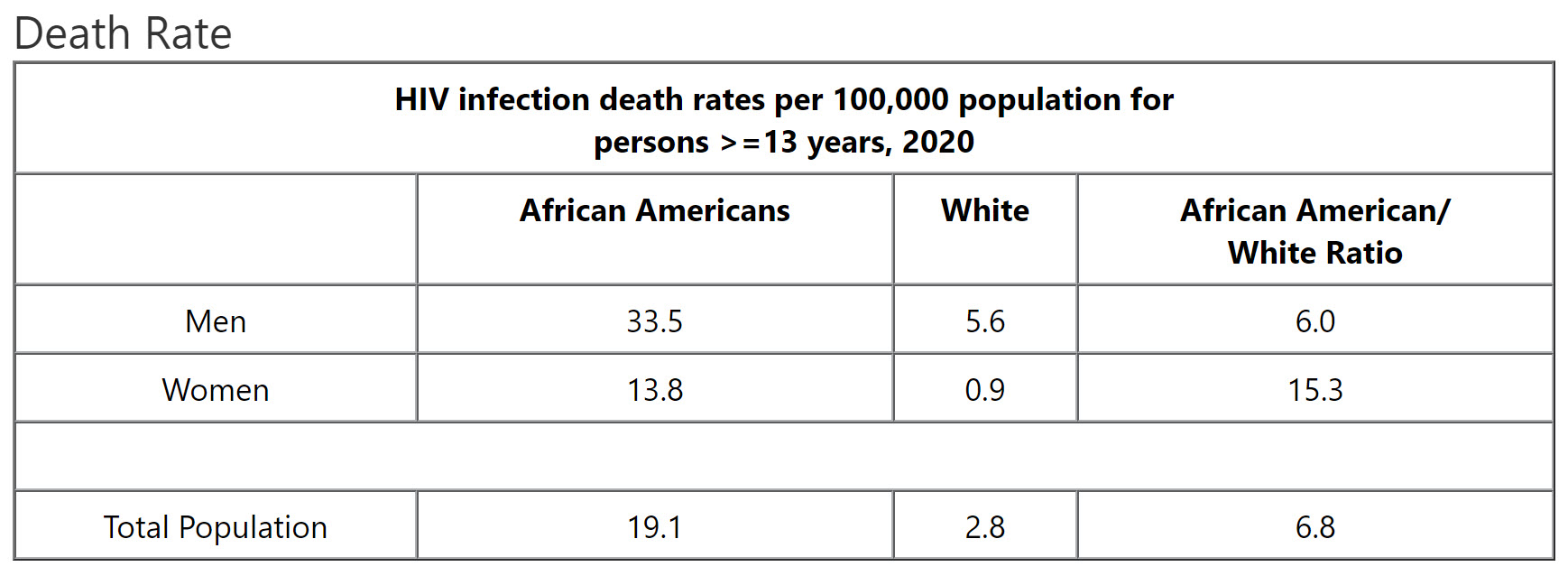
Source: CDC 2022. HIV Surveillance Report: Diagnoses of HIV Infection in the United States and Dependent Areas, 2020, v.33. Table 12a.
https://www.cdc.gov/hiv/pdf/library/reports/surveillance/cdc-hiv-surveillance-report-2020-updated-vol-33.pdf [PDF | 6.0 MB]
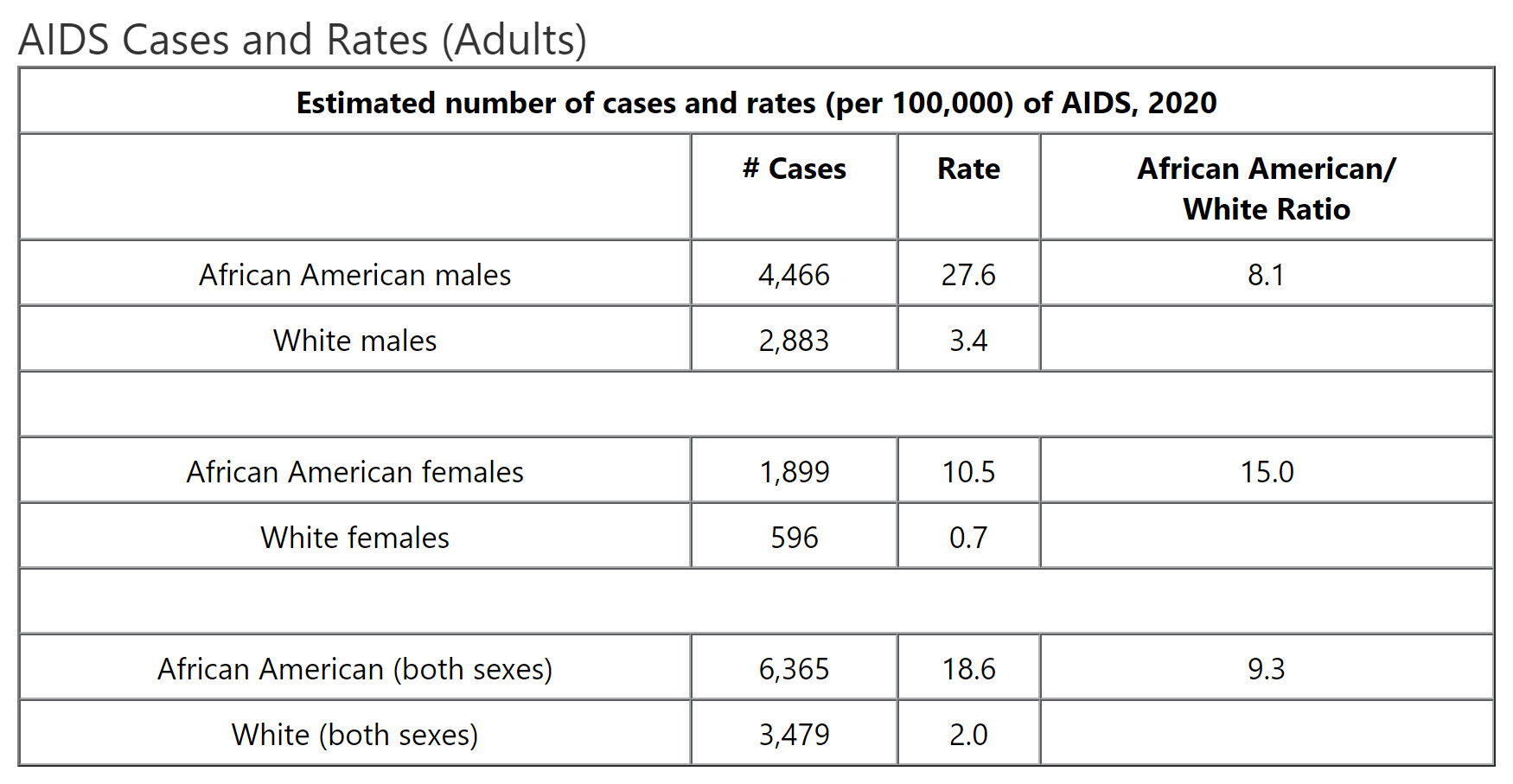 Source: CDC 2022. NCHHSTP Atlas Plus.
Source: CDC 2022. NCHHSTP Atlas Plus.
https://gis.cdc.gov/grasp/nchhstpatlas/tables.html [Accessed 12/13/2022]
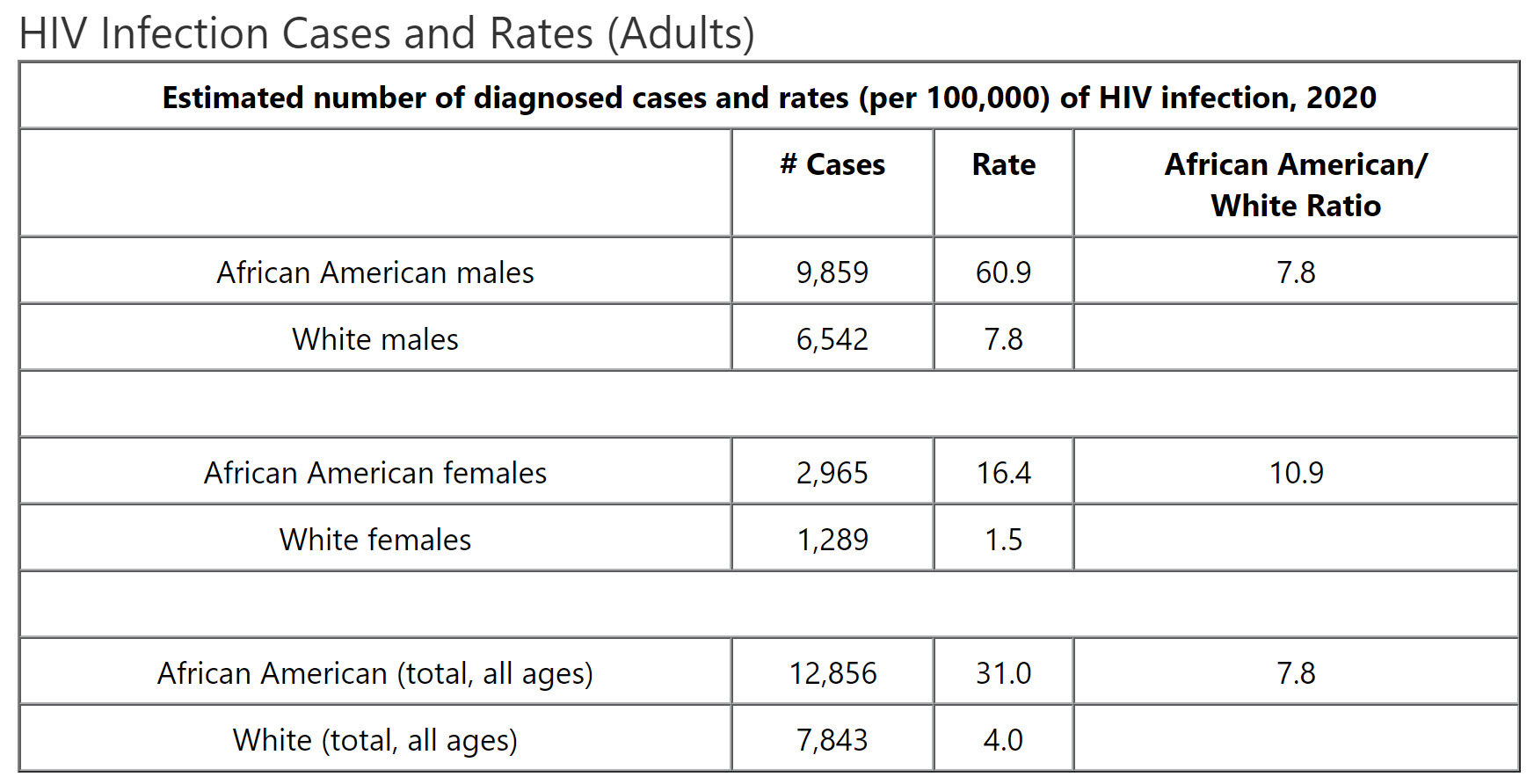
Note: Data for 2020 should be interpreted with caution due to the impact of the COVID-19 pandemic on access to HIV testing, care-related services, and case surveillance activities in state/local jurisdictions.
Source: CDC 2022. HIV Surveillance Report: Diagnoses of HIV Infection in the United States and Dependent Areas, 2020, v.33. Tables 3a and 3b.
https://www.cdc.gov/hiv/pdf/library/reports/surveillance/cdc-hiv-surveillance-report-2020-updated-vol-33.pdf [PDF | 6.0 MB]
How Does HIV/AIDS affect African American Populations?
-
- Although Black/African Americans represent almost 13 percent of the U.S. population, they account for 42.1 percent of HIV infection cases in 2019.
- In 2020, African Americans were 7.8 times more likely to be diagnosed with HIV infection, as compared to the white population.
- African American males have 8.1 times the AIDS rate as compared to white males.
- African American females have 15 times the AIDS rate as compared to white females.
- African American men are 6.0 times as likely to die from HIV infection as non-Hispanic white men.
- African American women are 15.3 times as likely to die from HIV infection as white women.
See “HIV/AIDS and African Americans,” Last Modified: 2/17/2023. https://minorityhealth.hhs.gov/omh/browse.aspx?lvl=4&lvlid=21 for the four graphs above and the bullet points above.
Such changes are needed to help address the alarming shift in life expectancy Black males have been facing since 2020.
9) Targeted Small Business Support
Commensurate with our status in society, and taking into account the lack of capital and inherited wealth, Black male-owned businesses should be targeted (particularly during COVID) for support.
10) Social Security & Life Insurance Family Support
Accrued social security and life insurance from deceased Black males should be partly applied to children and grandchildren (when applicable).4
11) Paternity Leave
Federally mandated (nationally imposed) “parental Leave” for fathers on a state, private, and federal level and applied nationally across the board. As Black men have been designated the most participatory fathers across race in a recent study articulated by Josh Levs in his text, All In: How Our Work-First Culture Fails Dads, Families, and Businesses–And How We Can Fix It Together (2015), their lack of access to parental leave is unjust.
12) Reverse Voter Disenfranchisement
Allow Black male ex-convicts to have their voting rights restored upon release from incarceration. For context, review the origins of voter disenfranchisement for convicts:
“The historical context for this comes from old English common law which justified the concept of “civil death” as punishment for conviction of treason or a felony because a person committing a crime had “corrupt blood,” making the person “dead in the law.” America did not immediately adopt this position because the Constitution was silent on voting rights — it neither granted nor denied anyone the right to vote.
In 1787, the Constitution considered Black people as three-fifths of a human being. Blacks voting was not an issue. Then came the Civil War and the 13th, 14th, and 15th Amendments. Enslaving people, except as punishment for a crime, was illegal. Birthright U.S. citizenship was established, explicitly including freed enslaved people. Black men got the right to vote. Over 2,000 Black men were elected to government offices, and they began purchasing or homesteading property and voting.
America responded. The exception in the 13th Amendment allowing slavery as punishment for a crime was paired with “Black Codes,” which basically criminalized Black life. Blacks convicted under Black Code laws were leased out to do work, providing cheap labor to boost the South’s faltering economy. In 1850, 2% of prisoners in Alabama were non-white. By 1870, it was 74%. At least 90% of the “leased” prison laborers were Black.
In the 15 years between 1865 and 1880, at least 13 states — more than a third of the country’s 38 states — enacted broad felony disenfranchisement laws. The theory was simple — convict them of crimes, strip away the right to vote, imprison them, and lease them out as convict labor and Blacks would be returned to a condition as close to slavery as possible.
What is the result of this history? Black Americans of voting age are more than four times as likely to lose their voting rights than the rest of the adult population. One of every 13 Black adults is disenfranchised. In some states like Virginia, Kentucky, Tennessee, and, until recently, Florida, one in five Blacks have been disenfranchised. In total, 2.2 million Black citizens are banned from voting. Thirty-eight percent of the disenfranchised population in America is Black.” (Jeffery Robinson, The Racist Roots of Denying Incarcerated People Their Right to Vote.)
13) Black Male Specific Reparations for the Trans-Atlantic Slave Trade through 21st Century Hyperincarceration
Reparations is a crucially overlooked area that has required redress since the late 19th century. Due to the United States’ treatment of Black men specifically, practices deemed legal dramatically targeted and impacted Black male life in a manner distinct from the rest of Black America altogether (see Jim Sidanius’ work on Social Dominance Theory for more detail on “outgroup male treatment”). Thus, in addition to petitions for reparations for all African Americans whose ancestors were enslaved in the United States:
a) Specific reparations should be given to Black men specifically due to:
1) the exclusivity of treatment from the onset of slavery to (roughly) 1800, a time period where Black males were sought after to a greater degree than even Black women for enslavement,
2) their prioritization of lynching and terrorist mistreatment,
3) the designation that they only were allowed 3/5th a vote when given the right, then terrorized not to even be able to use it,
4) the targeted campaign to be brutalized and killed by law enforcement, and
5) the target of hyper-incarceration policies from Reconstruction (convict leasing) through to the 1970s (prison industrial complex) to now.
b) Targeted Wealth Declines
Due to the impact of educational inequalities, neighborhood effects, workplace discrimination, parenting, access to credit, rates of incarceration, and many other factors, research has shown that Black males are more likely to experience
“…race gaps in intergenerational mobility largely reflect the poor outcomes for black men. The report is another contribution to the growing literature showing that race gaps in the intergenerational persistence of poverty are in large part the result of poor outcomes for black men. Specifically, Chetty et al. show that black men born to low-income parents are much more likely to end up with a low individual income than black women, white women, and—especially—white men.“
That said, reparations for Black males should be commensurate with what they’ve experienced both contemporarily and historically.
c) Targeted For Growth
Reparations for every black boy born with $10,000 in an investment account. The investment included in the account should be an S&P 500 ETF or mutual fund. This account shall not be drawn upon until the child becomes an adult and has had the financial training (outlined in the previous paragraph for provision 2). See the article here.
14) The United Nations: We Charge the U.S. With the Genocide of the Black Male
According to the United Nations‘ definition, and much of what’s listed here, Black men have been subjugated, neglected, targeted, and killed to a great enough degree to warrant an investigation that covers both contemporary and historical mistreatment.
15) Title VII Reform1
Amend Title VII (Civil Rights Act of 1964) by removing the addition of “sex” to the act, as it has been detrimental to Black males and by extension, Black families. The removal of “sex” from Title VII would be more in line with the spirit of the act as originally proposed in 1964 and would position both Black men and women as the rightful recipients of Affirmative Action resources and entitlements. It would also:
a) help to close the racial wealth gap, while
b) closing the wage gap between Black men and white men. And
c) remove the double-minority status of Black women and be fairer to Black men as far as employment, positions (administrative, electoral, white-collar, etc.), and educational access. (Also see Tommy J. Curry, “Feminism As Racist Backlash: Understanding How the Will To Dominate Black Americans Drove the Development of 19th and 20th Century Feminist Theory” on Congressman Howard C. Smith and the feminist takeover of Title VII to derail the Civil Rights Movements’ gains).
This should also be used to prioritize the hiring (or acquisition) of Black males in federal/state positions (or institutions who get federal contracts or monies) such as in terms of college recruitment; but also in software/tech, retail, public schools, post office, law enforcement, military, and fire departments.9
16) Data Disaggregation2, b
Black men are often statistically invisible. Without data that specifically focus on black men (as opposed to black people or men alone), the specific needs, support, and policy that must be met for black men to have an improved quality of life will never happen. Further, any policy measures implemented to assist black men (directly or indirectly) are doomed to fail without tracking the data. Only by means of disaggregating the data collected by public and relevant private entities can we be in a position to provide black men with the quality of life they deserve. Therefore, in the interests of justice, we make the following demand:
We demand that federal and state laws mandate that data collection efforts present data in a manner that specifies results by race, gender, and even sexuality (when possible). This should include a specific black-male category in addition to (or apart from) any aggregate data collected for the purpose of policy design, implementation, progress reporting, law design, ordinance design or any other intended (or actual) official government action or intended (or actual) large private firm actions in the interests of human rights, anti-discrimination or any other area of consideration that impacts (or will impact) quality of life of the studied populations.
17) Black Men’s Rights To Self-Defense13
Gun control has historically been used to disarm Black people generally and Black men specifically. The Jim Crow laws and black codes had specific language on restrictions of Black gun ownership. In the modern day, there is no specific language as such, but the impacts are similar. The restrictions of gun control on access to common self-defense technology have left Black men at risk of both criminal victimization as well as increased contact with law enforcement primed to see Black men and boys as criminals often resulting in harassment, criminal records, or even death.
Additionally, conceal-carry permitting schemes have often been manipulated to deny law-abiding individuals from carrying firearms for self-defense. This is done by having hefty fees, convoluted application processes, and the need to have applications scrutinized by local law enforcement, all of which disproportionately deny Black men and boys the right to defend themselves. Lastly, restrictions on the types of firearms and their magazines’ capacities presuppose that the government can predict the type of violent crime one may experience and the number of assailants that one might face, all of which disproportionately impact Black men and boys as this group of people has some of the highest rates and raw numbers of victimization of violent crimes.
Also, outlaw criminal inducement sting operations. This is where law enforcement induces their informants to spread rumors about drug stash houses with lots of money to poor Black men in hopes of them showing up to rob the house so that they can be arrested. Another type is where undercover agents offer exorbitant payouts for guns (sometimes as high as $150k). This has resulted in people buying guns legally to sell to the undercover officer which results in their arrest. Put another way, arrest people for committing verifiable crimes but stop enticing poor Black males to commit crimes they might not have ordinarily committed.
Lastly, eliminate criminal enhancements for drug possession charges while having possession of a firearm. This gives prosecutors undue leverage over defendants and disproportionately impacts black men. Over the last 90 years, these types of charges make up over 80 percent of all federal firearms charges. Limit such criminal sentencing for use of a firearm, not just possessing them.
Remedies to this issue include that which is below…
Provide grant money to pay for the following:
- a minimum of 8 hours of firearms training with at least 2 hours of live fire with a reputable instructor to any Black male of at least 18 years of age,
- the institution of firearms safety classes as part of the K-12 school curriculum,
- institution of a seminar that educates on the Black tradition of arms (similar to what organizations like the National African American Gun Association (NAAGA) provide),
- Lastly, we support the abolishment of:
a) gun ownership permits and carry permits,
b) abolishment of magazine size restrictions,
c) abolishment of semi-auto weapon restrictions, and the
d) abolishment of “Stop and Frisk” policies.
18) False Accusation Offender Registry13, 1
Create a false accusation offender registry for those who make false accusations for:
sexual assault,
rape,
molestation,
domestic violence, and
paternity.
Others to be added to the list include those who commit “reputational damage” against others using false claims (e.g. cancel culture), commit a unique form of social coercion (the practice of persuading someone to do something by using force or threats). Such threats can include publicly made false accusations about one’s sexuality, activities, background, and/or behavior.
The registry must be made public. Schools and employers must have access to this information.
Offenders are obligated under penalty of law to disclose their status to anyone that the offender is, plans to be, or could be involved in some kind of sexual or romantic relationship with. They must make this disclosure to the person before they take part in any romantic or sexual activity. Offenders must disclose their status under penalty of law to all schools and medical centers they enter or have affiliation with (especially through relationships with any minor children they have parental rights to or have the capability of being in custody of due to the relationship they have with that minor’s guardian). If convicted of non-compliance with this law, the penalty shall be no less than one year in prison and be required to complete a mandatory course on the harm caused by false allegations, with equal time discussing how such harms manifest in the lives of men, women, children, families, and communities.
Contributors:
1 BGS IBMOR
2 Adam IBMOR
3 David Williams
4 Stuart D. Knight
5 Tristan J.
6 Bryan M.
7 Chief in the South
8 Dennis Spurling
9 Charles Faulkner
10 Irami Osei-Frimpong
11 AAI
12 Lamont 2X
13 Douglass Jefferson, Senior VP of The National African American Gun Association
14 Carnell Smith
Footnotes:
a) On suicide, see: “Black adolescent boys are more likely to suffer from an injury due to suicide attempts from lethal weapons and suicide-related hospitalizations for Black youth have also steadily increased from 2008 to 2015 (Lindsey et al., 2019; Plemmons et al., 2018). This uncovering is alarming as suicide attempt is the risk factor that is most strongly associated with later death by suicide (Bilsen, 2018).” Abby Brady, Nathallie Chavez, and Morgan Pate, “Gender Differences in Black Youth Suicide,” The University of North Carolina at Charlotte, Research Brief, Summer 2021.
Also, see “Findings: In this cross-sectional study of 183,563 adolescents in the U.S., a decreasing temporal trend in suicidal ideation changed to an increase, with different turning points for female (2009), White (2009), Hispanic (2007), and Black (2005) adolescents. Male and Black youths had nonsignificant changes in suicidal ideation, but the greatest increase in the prevalence of nonfatal suicide attempts.
Males, particularly Black male adolescents, appear to have the greatest need in terms of prevention of suicidal behaviors. Both groups have underperformed in help-seeking capacity and there may be stigma and racial barriers to getting psychiatric treatment for young Black males. Strategies that prioritize monitoring the trends in risk factors for suicidal behaviors in racial/ethnic subgroups, design culturally appropriate prevention programs, alleviate structural inequality, reduce mental health stigma and barriers to health care, and promote help-seeking should be ethnically and sexually diversified for effective suicide prevention.” Yunyu Xiao, PhD1,2; Julie Cerel, PhD3; J. John Mann, MD., “Temporal Trends in Suicidal Ideation and Attempts Among U.S. Adolescents by Sex and Race/Ethnicity, 1991-2019,” JAMA Network Open, June 14, 2021 (https://jamanetwork.com/journals/jamanetworkopen/fullarticle/2780949).
Also see “Abstract: This chapter examines suicide and suicidal behaviors among African American adolescent and young adult males. It shows that the odds for suicide were highest for African American males, even after controlling for the numerous clinical, geographic, and sociodemographic vulnerability factors associated with suicide. This finding supports previous risk factor studies and epidemiological research that illustrated a rise in suicide among African Americans, particularly the younger age groups. Consistent with prior analysis of suicidal behavior, the analyses reveal that African Americans are more likely to die at younger ages of suicide. The study also confirmed prior research showing that having a gun in the home substantially increases the risk for suicide. This is particularly true for males, as illustrated by the almost fourfold increase in the risk of suicide when a gun is known to be in the home.” Sean Joe, “Suicide Among African Americans: A Male’s Burden https://academic.oup.com/book/4368/chapter-abstract/146320114?redirectedFrom=fulltext.
Finally, for the full quote used above see “The study, published Monday in the journal JAMA, found that teenagers attempting suicide increased 22% over the course of nearly three decades, but the trend varied depending on sex and race. Black males had the highest increase in suicide attempts compared to any other race in the group, for example, increasing nearly 80%. Other females groups had this upward trend, too. More white women attempted suicide from 2009-2019, for example. Suicide ideation has also increased for white, Black, and Hispanic women. Researchers at Indiana and Purdue University surveyed 183,563 high school students from 1991 to 2019 in the U.S. The survey was given twice a year and asked three questions about suicide ideation, suicide plans, and suicide attempts. Young Black men are treated as stronger and older, but don’t have people to talk to about vulnerability. The study authors said young Black men face financial hardship, among other stressors, and may have untreated mental health needs.” – Kelsie Sandoval, “Suicide Attempts Are Rising Among Young Black Men. Experts Say They Face A ‘Perfect Storm’ Of Hardships,”https://www.insider.com/rise-young-black-men-attempting-suicide-perfect-storm-of-hardship-2021-6.
b) On #16) Data Disaggregation:
Data disaggregation speaks to the need for
“Sometimes, being seen becomes a matter of life and death. It can determine whether we are able to live a life of well-being and enjoy access to health, educational, and economic opportunities. Being visible is especially important in decisions that guide federal, state, and local policies, funding, and institutional practices and programs…But when we look to existing data for answers, we rarely find this information. It is either not collected at all, or the existing information on race and ethnicity is lumped into broad categories that do not allow distinct groups to be seen. These flaws in data collection and reporting render populations invisible, mask unique needs, and hide strengths and assets. It means that decisions are being made that impact people’s lives and well-being without complete information.”
Data disaggregation affects not only policy advocacy but the successful implementation of policy. Without a way to accurately measure results and gauge need, advocates and policy makers are left unable to effectively redress the core issues facing the demographics they serve (1). This has been a core issue among the LGBT community, Asian American communities and Latino communities which has led to improved policy results due to the accuracy of data being collected. Even as early as 1997 white Americans have had their data disaggregated by gender and separated from the hispanic ethnicity (2). The result has been that white non-hispanic males and females can get specific targeting when needed in the interests of justice and equity.
During the height of the Covid-19 pandemic the extent to which black males, as with other affected groups, was only estimated at best due to the poor data collection for racialized persons in general (3). Note what one study observed in regards to this matter (4):
There is growing evidence that the risk and burden of COVID-19 infections are not equally distributed across population subgroups and that racialized communities are experiencing disproportionately higher morbidity and mortality rates. However, due to the absence of large-scale race-based data, it is impossible to measure the extent to which immigrant and racialized communities are experiencing the pandemic and the impact of measures taken (or not) to mitigate these impacts, especially at a local level. To address this issue, the Ottawa Local Immigration Partnership partnered with the Collaborative Critical Research for Equity and Transformation in Health lab at the University of Ottawa and the Canadians of African Descent Health Organization to implement a project to build local organizational capacities to understand, monitor, and mitigate the impact of the COVID-19 pandemic on immigrant and racialized populations”
The health implications of data disaggregation are not limited to Covid-19 but extends across the board from health insurance coverage to physical and mental health outcomes (5). While organizations such as the Asain and Pacific American Health Forum have been advocating for data disaggregation for over 30 years and little has been done in terms of data disaggregation (6). Further, our focus is more specific as it focuses on race and gender in the context of American history. Black racialized men have been the “subordinate males” targeted specifically for political, medical, physical, mental, social and economic violence for centuries in America (7). Dr. Tommy J. Curry summarizes these findings in the following excerpt (8):
“While intersectional theory 1 The capitalization of the B in the word Black is meant to point to the tension of how we think about Blackness as naming a particular people and struggle, and specific existence different Res Philosophica, Vol. 95, No. 2, April 2018 http://dx.doi.org/10.11612/resphil.1612 c 2018 Tommy J. Curry • c 2018 Res Philosophica 2 Tommy J. Curry has produced any number of positionalities that complicate the identitarian schema of race, class, and gender, Black men, specifically hetero-sexual Black men, remain isolated to the categories of violence, deviance, and sexual pathology. These ideas have become so intuitive that they often require no actual warrant or evidence to persuade various publics of their truth. Black men are caricaturized by gender theory, so it is easy to rationalize these phobias, which interpret Black men as patriarchal, violent, and indifferent to the suffering of others, as method. Despite decades of social science research showing Black males experience higher rates of employment discrimination than, and less preference to, their female counterpart due to the association of criminality, fear, and aggression with Black maleness (Livingston and Pearce 2009; Pager 2007; Moss and Tilly 2001; Moss 2006), under-representation in higher educational attainment (MacDonald et al. 2011), a disproportionate risk of statutory rape and sexual coercion as children and young adults (Curry and Utley Forthcoming; French et al. 2015), higher rates of intimate partner violence and homicide (Hampton et al. 2003; Palmetto et al. 2013; Langhinrichsen-Rohling et al. 2012; West 2012; Mallon 2007), and are more routinely targets of lethal violence in the United States (Curry 2017), contemporary theories of Black masculinity suggest toxicity is the cause of Black male deviance and maladjustments rather than the cultural and structural realities that confront Black men and boys as racialized-outgroup males in the United States (Oliver 2003; see Pence 1999 for a description of Duluth as ideological and politically motivated).”
As a result, it is imperative to the progress and well-being of black men and boys that data regarding their specific group be collected properly and analyzed. Data regarding black men specifically as a group is often scant. In some cases, it is disaggregated only when it can be used to further the advancement of other demographics or target them for discrimination. This is a common pitfall in the current systems used by policy makers and organizations that collect data on gender that is “women only focused” (9). The UN has noted that financial initiatives around the world used to target women has helped close what has been termed the “gender pay gap” (10). Other studies and materials from advocacy organizations have laid out effective models for proper data collection, disaggregation and implementation in policy design for other specific groups (11). The United Nations is well aware of the need for disaggregate data collection and has provided guidance (12).
“We can only monitor progress if we have data that is disaggregated by sex, age, race, ethnicity, income, migration status, disability and other characteristics relating to the grounds of discrimination prohibited by human rights law. Only if we track progress for different population groups, in all countries, can we ensure that no one is indeed being left behind.”– Zeid Ra’ad Al Hussein, United Nations High Commissioner for Human Rights
This policy demand is written with the express purpose of creating and collecting a black male category for data collection that includes but is not limited to the following quality-of-life areas:
- Economics – poverty, income, promotions, wealth, ownership, business start-ups, etc
- Healthcare – EoL care, Dental care, physical therapy, operation success rates, life expectancy
- Housing – homeownership rates, householder rates, homelessness (sheltered), homelessness (unsheltered), jail-shelter substitute (13)
- Justice – incarceration, jury selection, sentencing (as perps), sentencing-(as victims), statute impact and policy implementation results
- Politics – representation, turnout, registration, eligibility, Advocacy
- Education – degrees conferred, scholarships offered, grants available, Ph.D. programs extended, faculty representation, discipline/advancement ratio
Black men have contributed more than their fair share to America and even that is an understatement. However, we have never received specific policies designed to give them the quality of life we deserve. Policy alone will only make the issues black men face worse if it is not paired with data. How so? Affirmative action was a policy designed by a black man to correct the historic inequities black men faced in the labor market, healthcare and education (14). Yet, the biggest beneficiaries of affirmative action have been white women and in the black community, black women (15)(16). Without the disaggregated data measuring progress and efficacy of policy, black men could find themselves locked out of policy meant to improve their quality of life.
References:
4. Etowa J, Hyman I, Dabone C, Mbagwu I, Ghose B, Sano Y, Osman M, Mohamoud H. Strengthening the Collection and Use of Disaggregated Data to Understand and Monitor the Risk and Burden of COVID-19 Among Racialized Populations. Can Stud Popul. 2021;48(2-3):201-216. doi: 10.1007/s42650-021-00050-2. Epub 2021 Oct 4. Erratum in: Can Stud Popul. 2022 Apr 5;:1-7. PMID: 34629702; PMCID: PMC8488075.
5. Kauh, T.J., Read, J.G. & Scheitler, A.J. The Critical Role of Racial/Ethnic Data Disaggregation for Health Equity. Popul Res Policy Rev 40, 1–7 (2021). https://doi.org/10.1007/s11113-020-09631-6
6. https://www.apiahf.org/focus/health-care-quality/data-disaggregation/
7. Sidanius, Jim and Felicia Pratto. “Social Dominance: An Intergroup Theory of Social Hierarchy and Oppression.” (1999).
8. Curry, Tommy. (2018). Killing Boogeymen: Phallicism and the Misandric Mischaracterizations of Black Males in Theory. Res Philosophica. 95. 1-38. 10.11612/resphil.1612.
10. https://www.unsgsa.org/resources/news/study-highlights-how-policymakers-use-gender-disaggregated-d
13. https://www.streetsheet.org/county-jail-a-primary-shelter-for-sfs-homeless-people/
14. https://www.law.cornell.edu/wex/affirmative_action
15. https://www.nola.com/news/politics/article_c8732135-4f73-5ca2-b8be-2611797730d8.html
16. https://www.jbhe.com/news_views/51_gendergap_universities.html
See also:
- https://www.cacf.org/policy-advocacy/invisible-no-more
- https://www.policylink.org/our-work/community/health-equity/data-disaggregation
- https://www.iisd.org/articles/insight/disaggregated-data-essential-leave-no-one-behind
- https://dataqualitycam.wpenginepowered.com/wp-content/uploads/2019/09/DQC-Disagg-Data-10082019.pdf
- https://endhomelessness.org/wp-content/uploads/2019/09/DDP-Gender-brief-09272019-byline-single-pages.pdf
- https://www.vox.com/2016/5/25/11682950/fisher-supreme-court-white-women-affirmative-action
- https://www.urban.org/sites/default/files/publication/50186/1000862-Affirmative-Action.PDF
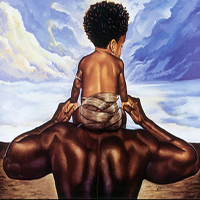

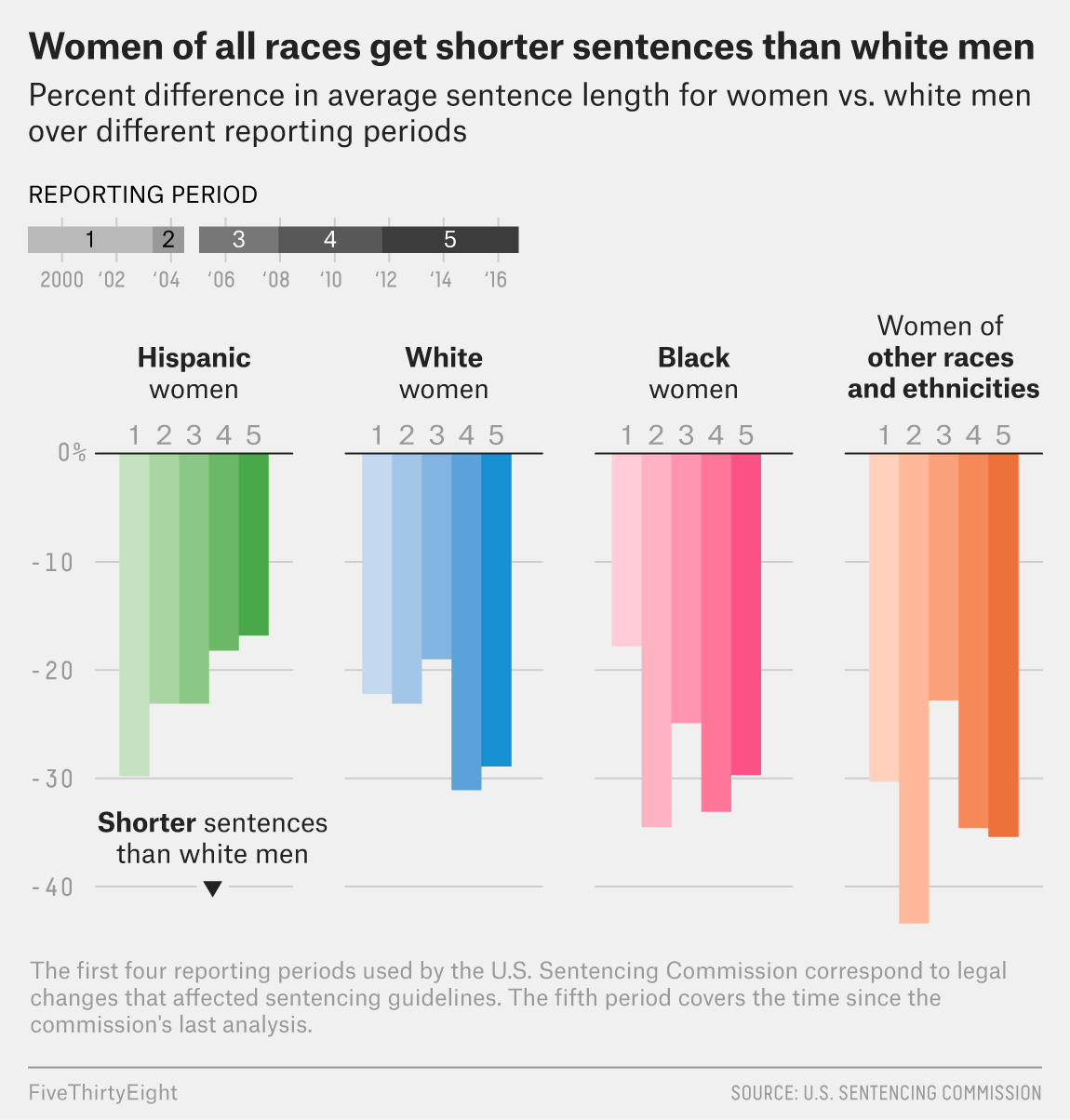
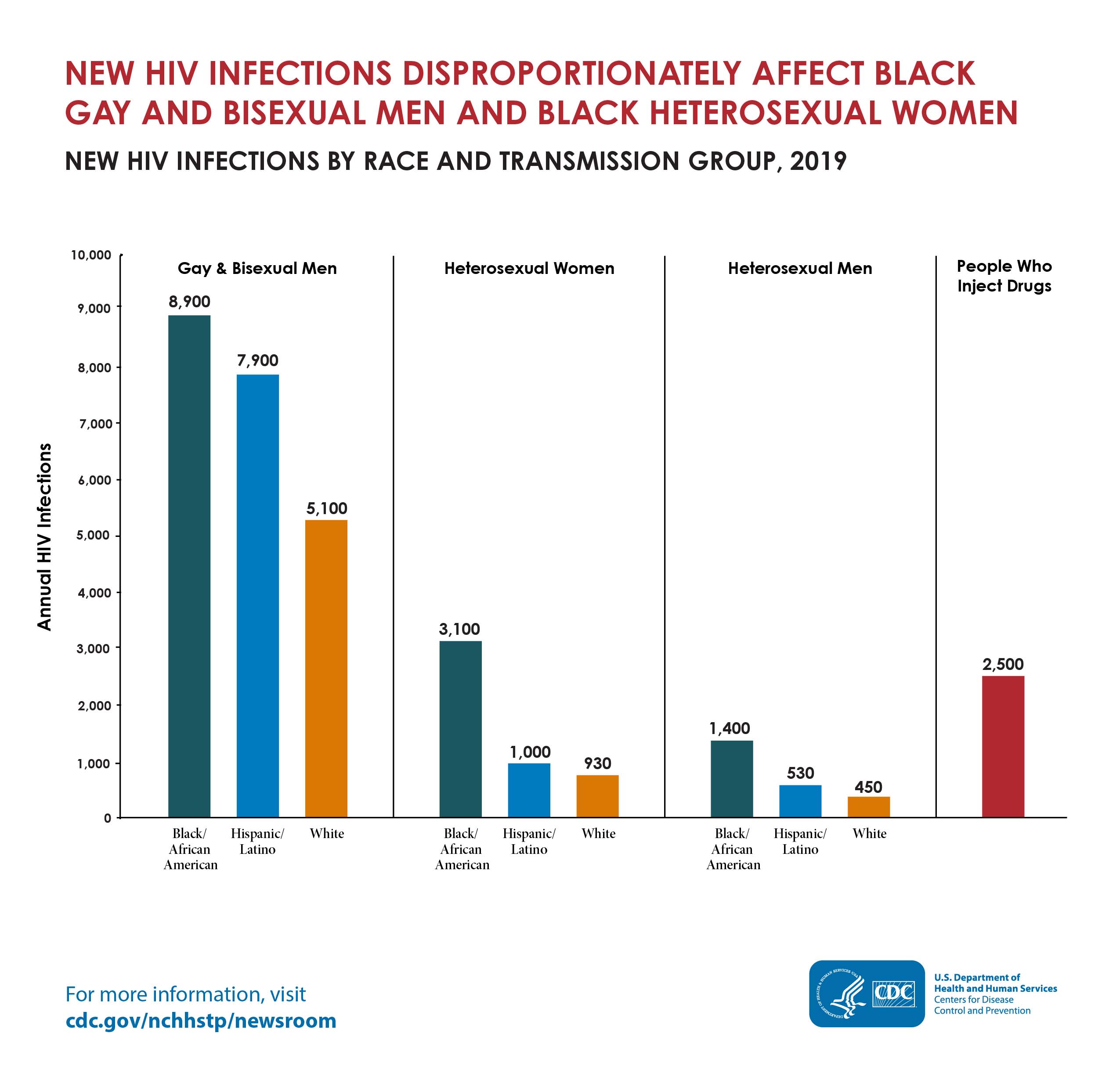
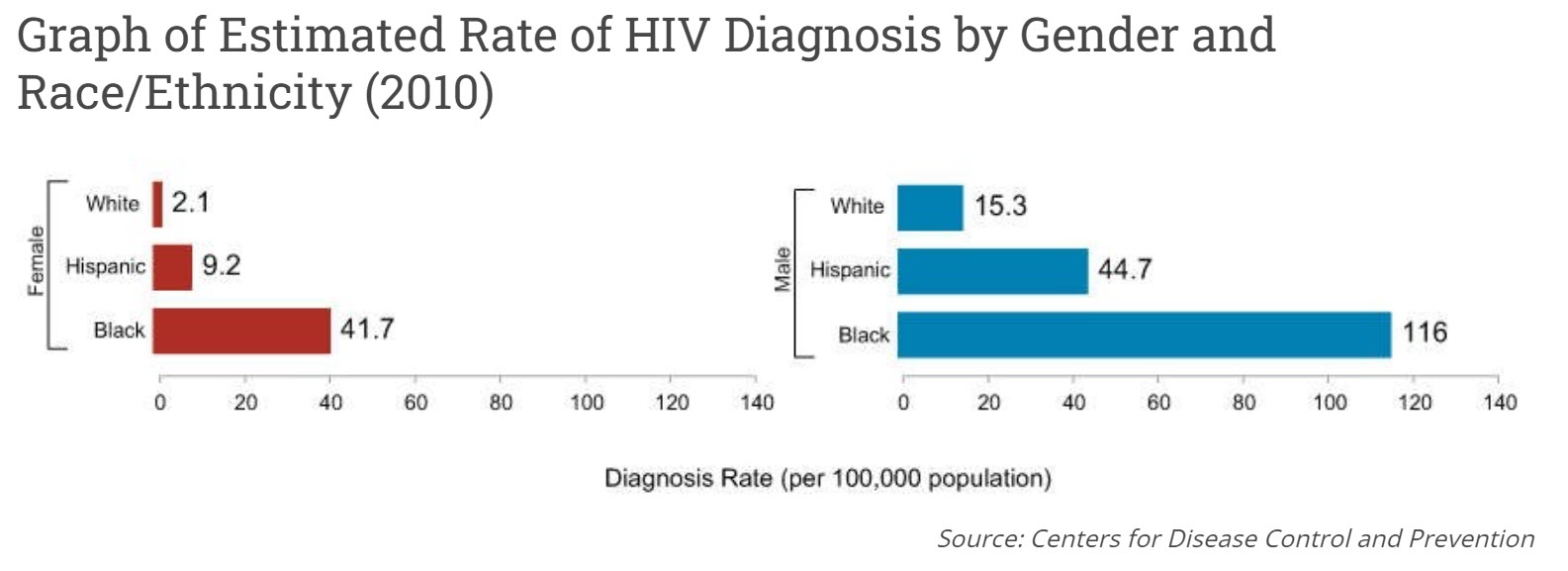
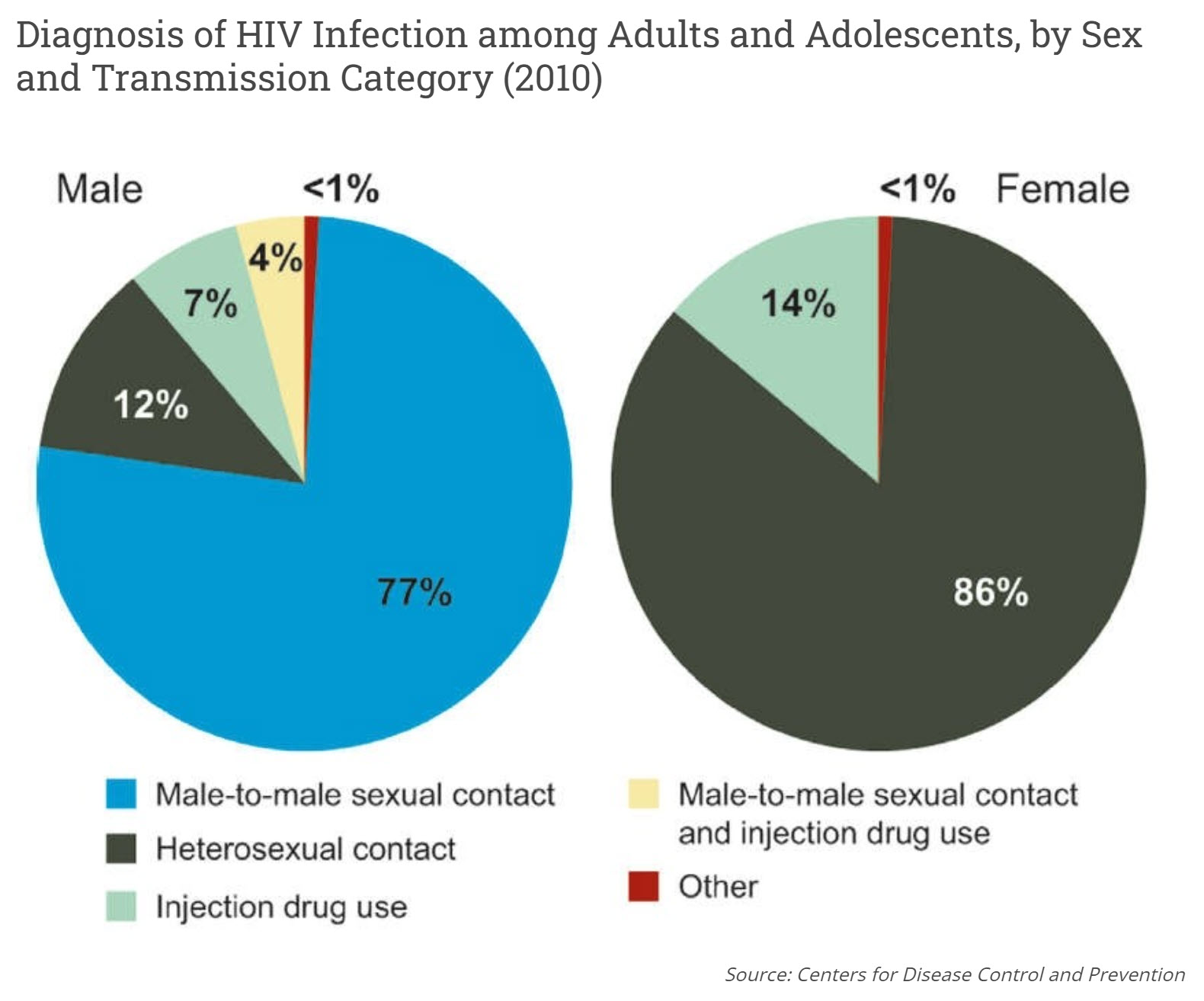

This has got to be most well thought out and concise plan that I have come across. All points are valid and can’t be argued against.
A 15th point should be the null and void of the voting rights act NEED to be voted on. It’s a slap in the face to Blacks for our right to vote be placed in the hands of politicians. The 13th amendment needs to be reformed to exclude the government to reintroduce slavery if a Black commits a crime. Why In the hell has no politician addressed this!? This should’ve been addressed decades ago, at the very least Obama should’ve addressed this.
Do you have an article, paper, video, and/or book to substantiate what you’re talking about?
Any Child support paid should be considered earned income due to it being taxed. I do have an actual testimony and statistics. Women are allowed to claim child support as an extra earned income that improves theyre credit and ability to finance vehicles and other products and services. Men who pay child support are not allowed to claim payments made when filing taxes even when the amount can be a third to even 50 percent of theyre earned income.
Well written, my only concern is where is the petition to present to congress.
While I don’t know if Corey Booker would be willing to present it, I am sure there may be a few who would be willing to take it to the floor if they find that it will be beneficial for them.
There are some things that may need further study but other things that has a better chance in this report, not referring to reparations, but some of the other things listed.
Other than that, it’s a start.
I don’t recall seeing any mention of restoration of parental consent for making decisions with regards to the child.
50/50 does not mean that both parties have tye ultimate decision.
There is still a primary, secondary component with joint custody.
Also a grant to research the proposal by both parties of how it effects the community. It’s been spoken of butvI don’t believe it’s been proposed.
Reblogged this on nomasons and commented:
T Hasan Johnson, heard this following his recent discussions
Gwiz, there was a similar list of concerns raised by the legend, George Subira Trower, in Money Issues
Outstanding ideas to push back on. I would love to contribute anyway I can.
Propose something and if added, let me know if you want to be credited.
Realizing this is a rough draft/living document/work in progress, is there current utility in correcting the sentence below?
7) Intimate Partner Violence/Homicide Policy Reform
…(meaning men assault women to the same degree men assault women…
Fixed. Thanks!
Want to add another point to the agenda dealing with funding for black boys with autism. Direct funding for education and resources to make sure these young men succeed in today’s society. And the funding stated for black men and boys who may or may not have been3 diagnosed with autism.
I’m firm believer that black men who know the history of ANTI-BLACKNESS male history of America should become independent voters and support black community unions to promote and practice empowerment agenda to the black community state in America.
I will support this vision.
I like these proposals so far. Cain’t add nothing as of yet.
I like this
Under the addendum to provision 1, subsection (b), I propose specific language including interest on the penalties. The interest should be 7% compounded annually in addition to the principle owed to the injured party. I would also add that “presumption of fatherhood” be formally stricken down as established law.
Under provision 2 of the agenda, I would like to include specific language for single sex education to include curricula that accommodates the learning style of young boys. Rote learning styles may be insufficient, and tactile styles of learning may need to be implemented for them. In later years of schooling, financial education for black boys should be a requirement.
Under provision 13 of the agenda, I would like language included that provides reparations to every black boy born with $10,000 in an investment account. The investment included in the account should be an S&P 500 ETF or mutual fund. This account shall not be drawn upon until the child becomes an adult and has had the financial training outlined in the previous paragraph for provision 2.
Link: https://www.kiplinger.com/article/retirement/t047-c000-s004-a-50-year-plan-for-retirement-savings.html
YESSIR!
An addendum should be included either with or under section 1, subsection (d) to automate financial abortion for cases of “female stealthing” (when a woman sabotages male contraception) and criminal charges should also be added. Example in article below:
https://www.msn.com/en-us/news/world/stealthing-woman-who-poked-holes-in-mans-condoms-sentenced/ar-AAWZmOZ
Can we please spell out what these acronyms are when they are first used. Otherwise, good stuff.
Which acronyms?
Re:
4) Targeted Homelessness Programs
Especially post-incarceration, Black men should be prioritized for housing as they are most often turned away despite having a housing vouchers
Delete “a” to read…turned away despite having housing vouchers.
The tender years doctrine need to be 100% abolished.
Pardon me if I missed it, but do we have ANY black men (or women) in legislature who has seen and/or weighed in on this amazing document?
Not directly…
Your efforts are appreciated and do not go unnoticed. Excellent work. 💯
Would be great to see an options for fathers rights reguarding abortion of said child should the father want to keep the child.
Going to scan again if I missed it in initial reading.
What would you propose as far as what should be done when a man wants to keep a child a woman doesn’t want?
The man should have a say in the potential life of the child. The whole argument of my body my choice went out the window when both bodies created a physical unified pact to combine, on purpose or other wise, DNA.
Should the primary prolife accepting parent be willing to deal with the physical, financial etc. burden of responsibility then that child should have a right to come to full term life until separated by legal documentation and forfeit of parental rights by choice directly after birth.
The mother/birthing parent (for today’s standards) should be given some REASONABLE support from the father should he be the one to decide to raise the child despite the denial of the child by the mother.
If I think of more I will add later.
I would like to share some info with regard to your 13 point Initiative that you may find interesting. I can only send via direct email since there isnt enough space available here.
Hasan@THasanJohnson.org
Pingback: Attorney Dennis Spurling Weighs In On The Black Male Political Agenda - AskField
Pingback: ‘A Sea of Black Mens’ Faces’: LA’s Black Homelessness Crisis – AltBlackNews | We don't all think alike
Pingback: Pay More Attention When Black Men Check Out – Payday
Check your email Dr. T. I just sent you a few addition ideas.
Hmm. I don’t see it. What email should I search for?
Pingback: A Black Man Stands Up Against IPV (Abuse) - Corruption Buzz
Pingback: The Re-Color Purpling of Black Women (ft. Dr. Travis Harris & Layman’s Journal) @TheColorPurple – AltBlackNews | We don't all think alike
I love this Platform and appreciate your brilliance in bringing it together. My older cousin hipped me your existence. I love the format you’ve presented these directions and I’m grateful that you were put on my radar.
The web, far too often isn’t quite black enough.
Am I the only one who saw Django?!
My film critique of the Samuel L Jackson series Secret Invasion was taken down and banned for dissecting the show through the lens of the Willie Lynch’s letters to lend an understanding to your general comic book audience because, in truth, not enough of us are in a position to.
The full time content creators who commentate, speculate or narrate the effect and affects of the writers room as it reflects on the youth of our culture, can’t like we can.
Given, I didn’t even use racial slurs in my delivery.
So, I did my homework of Marvel Comics, with 80 years of live action tv and film history, and keeping in mind the racial-political landscape set by the death of Chadwick Boseman WakandaForever & Falcon Winter Soldier where the black Captain America is imprisoned for 30 years. Bringing plotpoints to the surface that were underline and unfamiliar to nonfans or new fans which the algorithm saw as too black coming from a film student, minister and historian.
I took my time, identified each film tropes used (by the executives over at “Mouse+”, so not to draw negative attention to your site), and if I must say so myself, cause Im the only one who can, it really was something to read.